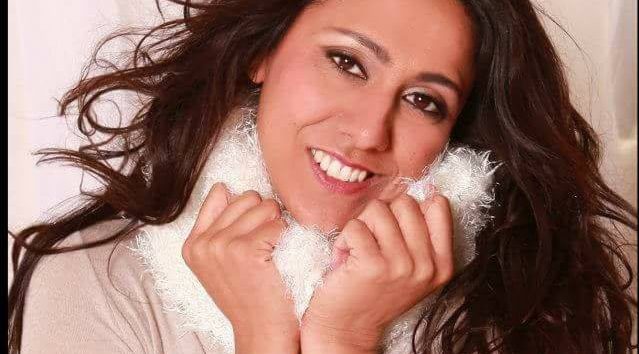According to the 2018 Irish Hospital Admissions report of psychiatric units and hospitals,157 patients were admitted in 2018 for eating disorders in Ireland.
Out of 157 patients, 154 were female (98%) and three were male (2%).
A 2007 study with 114 female college students found that those who were exposed to more fashion or beauty magazines were more dissatisfied with their overall appearance and exhibited a higher risk of eating disorder tendencies.
Nutritional Therapist and Body Image coach Linn Thorstensson said that there are several factors that can affect body image.
“There is no denying the messages from the media, social media and marketing contribute to low body image and then there is general diet culture that tells us we need to look a certain way to be happy,” Linn said.
She said that people start changing their bodies if they are going through an uncomfortable period in their life, as this is the only thing they can control.
“We use our bodies as the thing to blame when something else is off in our lives as the diet industry teaches you that if you make your body look a certain way everything will be alright.”
In regard to the growth of negative body image in society, Linn believes that social media plays a part in this growth as people relate to the individuals posting on it.
“Now with social media, people are not just comparing themselves to models in a magazine, it is everyday people who are closer to your reality than catwalk models you know are photoshopped.
Some people have become so looks-obsessed, she added, that they develop a fear of being in public because they may not look like their photos on social media.
“People post photos of themselves when they were younger, or from a specific angle and then become afraid to go out because they think they don’t look as good.
“There is more of a preoccupation with looks than ever before.”
Speaking about ‘influencers’, Linn said that they are “everyday people” and that people compare themselves to them.
“There is very little diversity in the way an influencer looks – they very often seem to have the same specific look and specific body type,” she said.
To help create a more positive body image, Linn believes that the key is to be aware of what we are consuming from the media.
“We need to be aware of the message being sent and strive for more diversity in media – mainly body diversity.
“It’s also important people develop coping skills for problems arising in life, as opposed to trying to control our bodies for the illusion of control in life.”
To learn more about Linn’s Practice you can go to www.straightforwardnutrition.com.
Another woman striving for diversity in the media is Galway model Sharon Dooley, the first-ever winner of Mrs Curves Ireland in 2016.
Having previously modelled in London for years, Sharon said the reason for wanting to break into the Irish modelling scene was her frustration with the lack of diversity in Irish media.
“I was getting annoyed with how social media portrayed people of a bigger size as couch potatoes, seeing as I myself had just completed a triathlon as a size 18,” Sharon said.
Sharon initially won the title of Mrs Curves Galway and was not expecting the national win as it was the first pageant she had ever entered.
“I never expected to win, as the girls I was competing with were younger and slimmer than me as the entry size started at size 12.”
After winning the national title, Sharon wanted to do something to inspire women of all shapes and sizes to embrace their bodies.
“When I was at home watching models on TV, I noticed they were all the same shape and size and I felt the clothes advertised would never look like that on me.”
After modelling at the Curvy Convention in London, Sharon felt that Ireland could benefit from such an event and thus founded Ireland’s Got Curves fashion event in 2017.
Sharon spoke of the misconceptions about plus-size models that made her want to start Ireland’s Got Curves.
“People think that plus size women are women who cannot buy clothes in Penneys because they can’t find their size, they don’t realise plus-size actually starts at size 12,” she explained.
Sharon describes the fashion event as something that uplifts others and promotes diversity in the fashion world.
“It is about celebrating all shapes and sizes as well as ages – we also had people from the Special Olympics last year and the parents of these people never thought they would see their child in a fashion show.”
Sharon added that she wishes to promote a healthy body image, but does not think self-hate is the way to achieve this.
“I don’t believe being overweight is healthy but often when women feel bad about their bodies, they are too embarrassed to go to the gym with open changing rooms.”
Although Sharon feels that negative body image existed prior to social media, as she does feel this has contributed to the problem.
“Negative body image was there when I became a plus-size model in 1997, but now I feel it’s sad how everyone is beginning to look the same with the uses of lip fillers, Botox and photo filters.
“If women became happy in their own skin there would be a huge amount of companies in the beauty industry that would go out of business,” she said.
Asked what she felt the solution to negative body image would be Sharon said she felt that the education of the younger generation was the way forward.
“Girls believe they need to lose weight because they have grown up watching their mothers’ weigh themselves, we need to understand we are the role models.”
In another effort to spread positivity, Sharon has started a weekly show on the Ireland’s Got Curves Facebook page where she interviews other Irish guests involved in the media.
A new episode of “On the Plus Side” comes out each Wednesday at 8pm.










